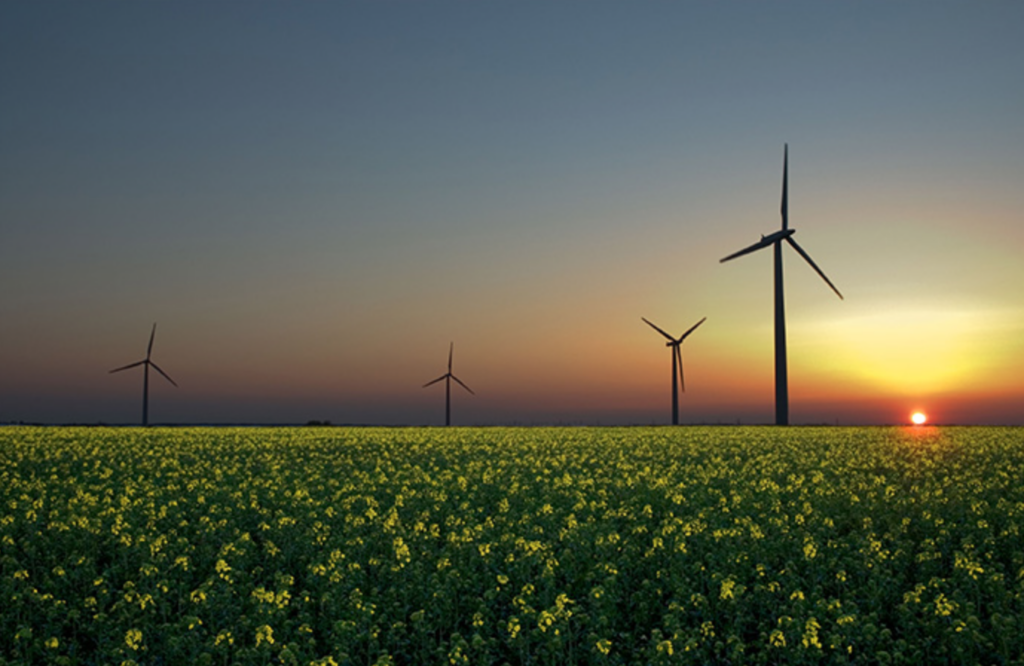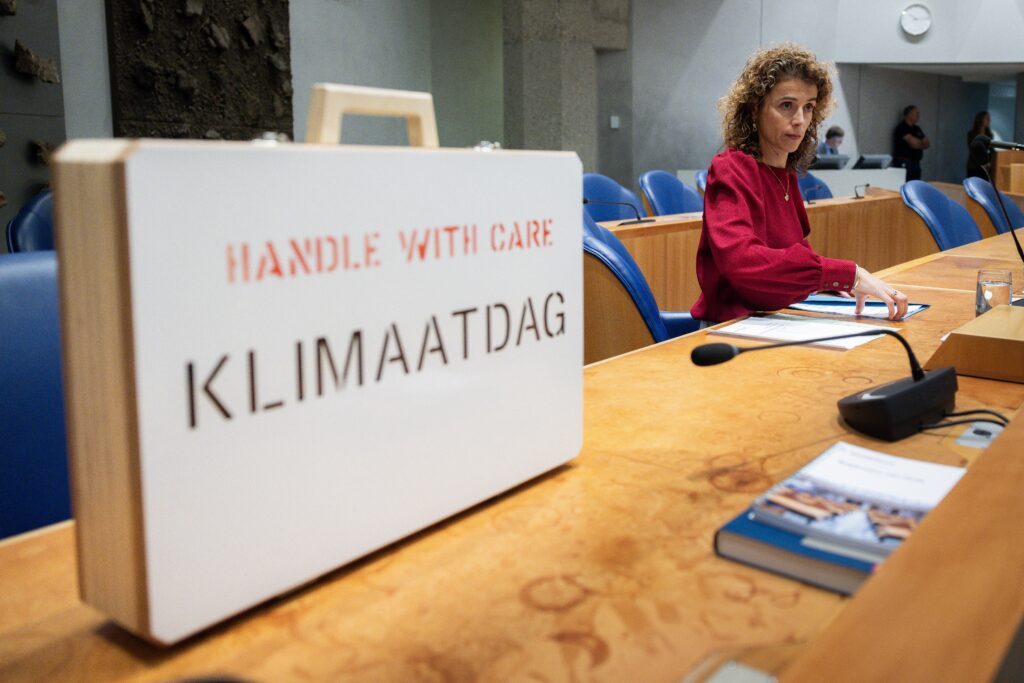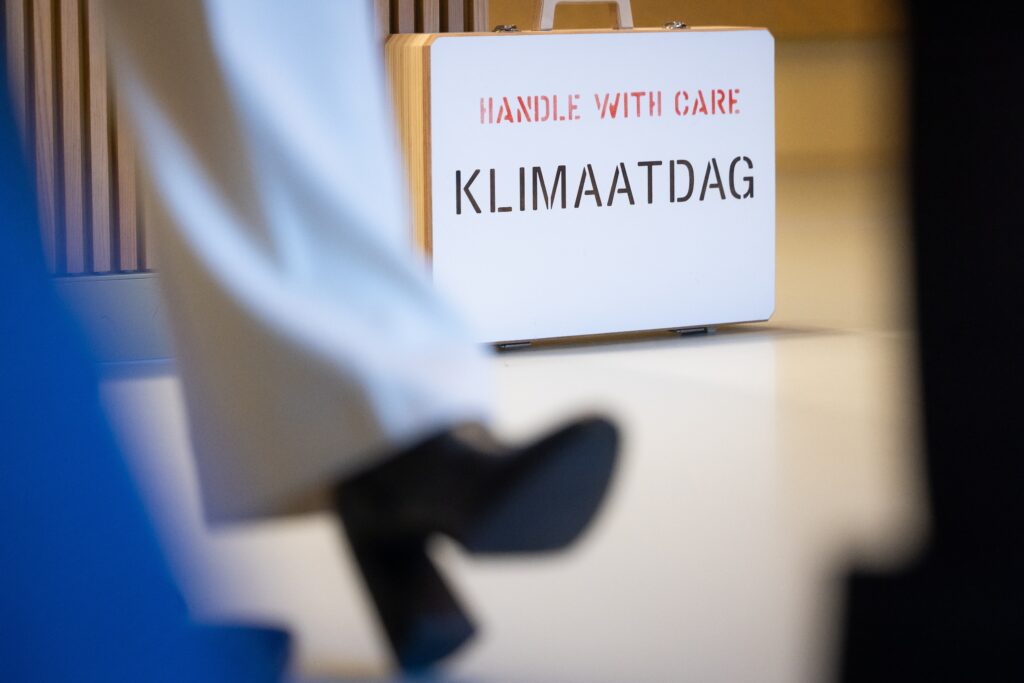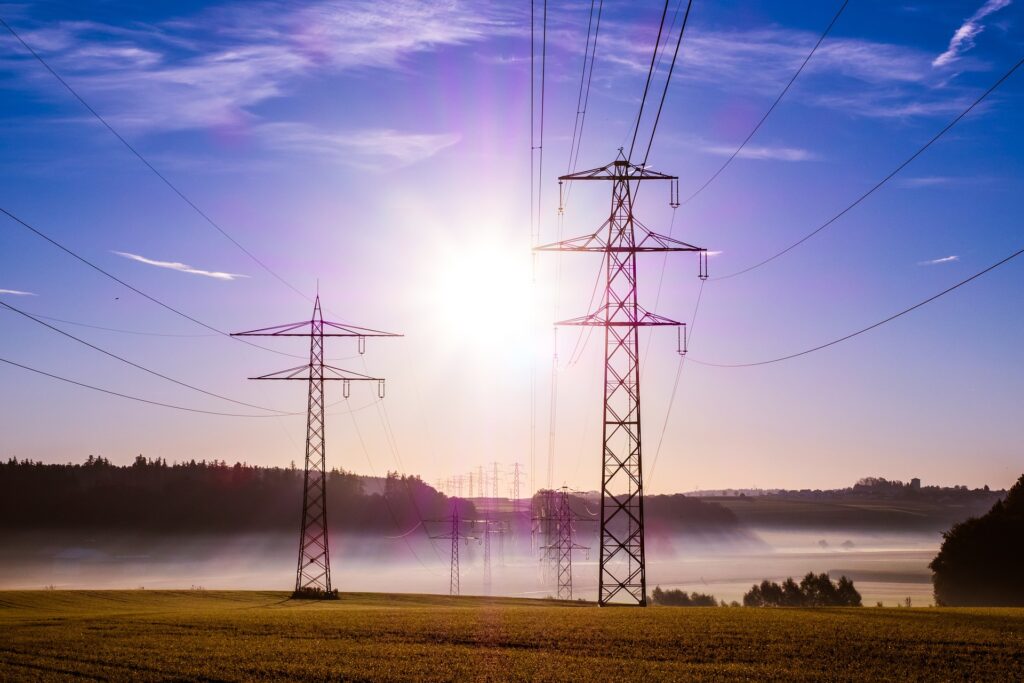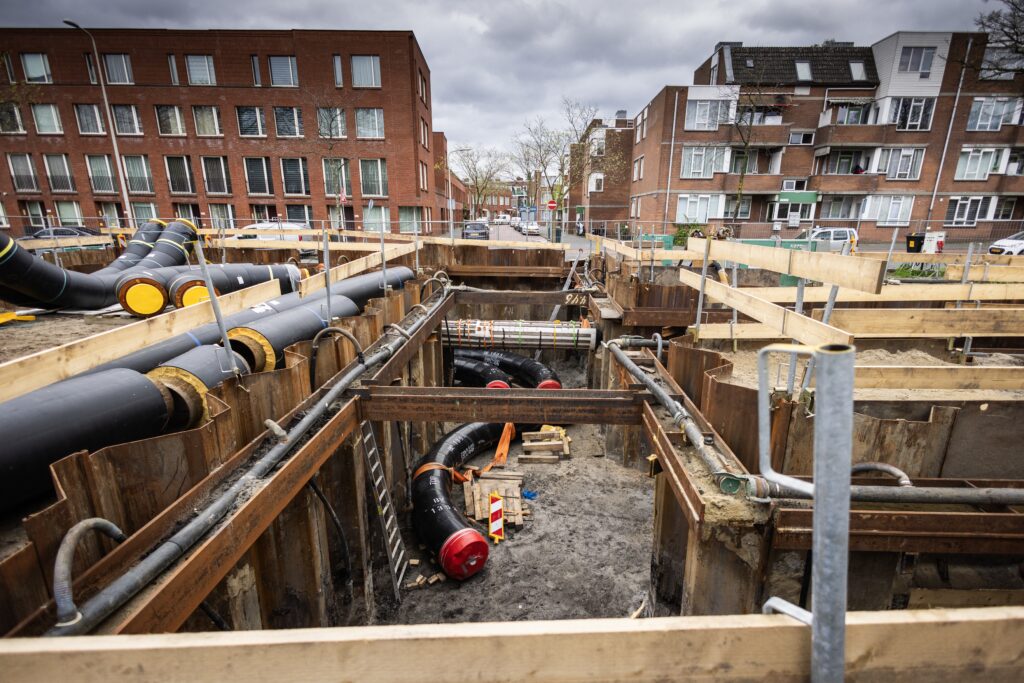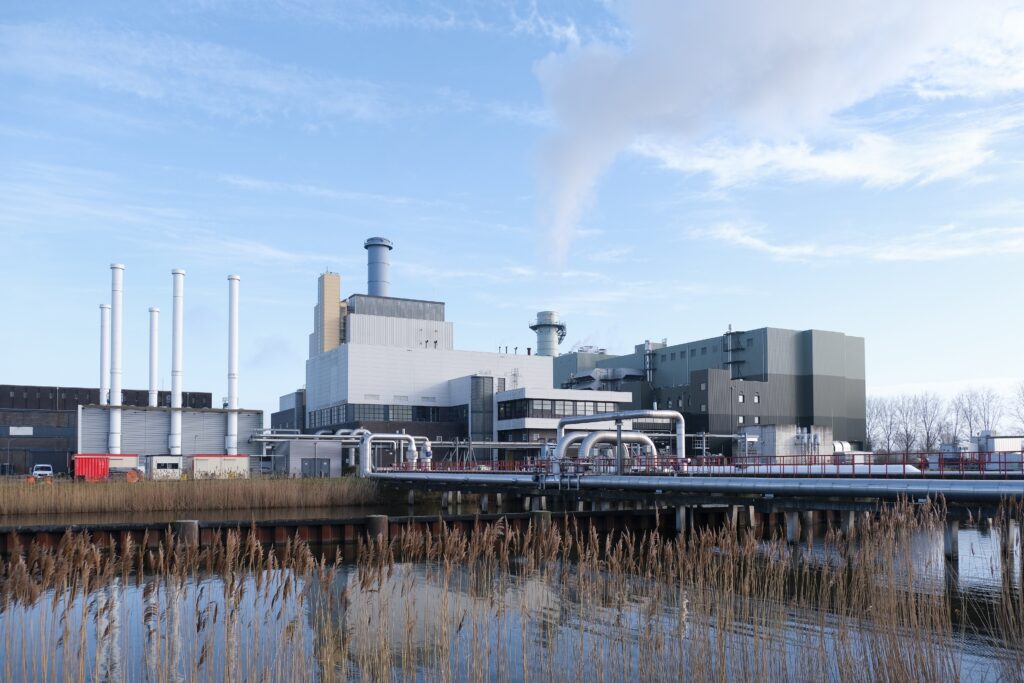Focus on implementation and additional policy to keep the CO2 reduction target in view
The Climate and Energy Outlook 2023 (KEV2023) from the Netherlands Environmental Assessment Agency (PBL) appears for the first time to offer insight into achieving the CO2 reduction target of 55% in 2030, with a bandwidth of 46-57%. Positive developments are the strong growth in the share of renewable energy to 32-42%, a growth that mainly comes from the growth of biofuels, and policy measures for the built environment such as making rental properties and non-residential buildings with a poor energy label more sustainable.
However, to achieve the target by 2030, everything must go well. Including factors that cannot be influenced, such as the weather and the international electricity market. And major bottlenecks in implementation must be resolved. The Council of State is clear in the Climate Assessment: “To achieve the climate target of 55% emission reduction in 2030, all policy intentions that the PBL was able to calculate should be implemented fully and on time and should have maximum effect. That is not realistic.”
Energie-Nederland sees the KEV2023 as an encouragement to make the necessary extra effort, both for implementation and for essential new policy. This is in any case necessary for:
- a CO2-free electricity system in 2035, which will require additional policy quickly;
- electrification of industry, with sufficient security of supply to avoid deceleration;
- rapid reinforcement and smarter use of the electricity grids, to minimize obstacles to the energy transition caused by grid scarcity as much as possible;
- rapid entry into force of crucial legislation to accelerate the expansion of the area-based approach for the built environment;
- better monitoring of energy savings, so that the cabinet can also manage and guide better.
New calculation method leads to premature conclusions about CO2 reduction
In PBL’s KEV2023, the expected bandwidth for CO2 reduction in 2030 is 46-57%. For the first time, the target of 55% is within the bandwidth. This gives the impression that government policy and implementation are accelerating sufficiently. Unfortunately, that conclusion is too premature.
The bandwidth that PBL provides in 2023 also includes, for the first time, a calculation of part of the policy that has been put on the agenda (the part that PBL considered feasible), however is not yet established. In previous years, PBL calculated that bandwidth using only established and proposed policy. This makes it difficult to compare the bandwidth in 2023 with previous years.
The government itself also states in the Climate Memorandum, which was also published on October 26, that an additional 4% reduction would be feasible if the agenda-based policy that PBL considers cannot be passed on is also included.
Energie-Nederland is concerned about adjusting the scope of the calculations for such important calculations, without the comparison with previous calculations being shown.
Energie-Nederland believes that the reduction target of 55% would in all likelihood fall outside the bandwidth without taking into account the policy that has been put on the agenda.
More concrete policy is needed for the government’s goal of a CO2-free electricity system in 2035
Energie-Nederland is concerned about the pace of policy development for the electricity sector. The government wants the electricity supply to be CO2-free by 2035. However, the KEV2023 indicates that much of the required policy is not specific enough and has therefore not been calculated. Given the long lead times for many investments, rapid policy development is essential.
It concerns the following topics that the cabinet had put on the agenda in the spring package (April 2023), but which PBL did not consider sufficiently concrete for the KEV2023:
- schemes for CO₂-free gas-fired power stations;
- policies for assigning value to negative emissions;
- the obligation for batteries at large solar parks;
- if necessary, other policy measures for the generic government goal of a climate-neutral electricity sector in 2035.
PBL expects an increase in emissions from the electricity sector due to the growth in electricity demand from industry, electric cars and the built environment. This cannot be kept up with the growth of sun and wind alone. As a result, gas-fired power stations will have to be installed more often. This is a strong incentive to continue to stimulate the scaling up of renewable electricity production. This requires, among other things, to speed up permit procedures and to limit grid scarcity as much as possible.
In this light, the investment plans of the network operators that were released on November 1 are also important. Energie-Nederland is looking at options to reduce the gap between the climate goals and the concrete plans of the grid operators.
Further sustainability of the industry, including through electrification, requires additional efforts
For industry, the PBL expects an additional reduction in CO2 emissions compared to the KEV2022 through the budget from the Climate Fund that has been reserved to finance customized agreements with large emitters and by simulating the use of green hydrogen.
In practice, however, Energie-Nederland sees that the electrification of industry in particular is not making sufficient progress. Network scarcity is a factor in this. But also the uncertainty about sufficient supply. Energie-Nederland is in favor of a concrete electrification target for industry, for example 30 TWh in 2030, including corresponding policy. This can stimulate supply and demand.
Gap between goals and available resources for hydrogen underexposed
The KEV2023 rightly states that with the current national plans it is uncertain whether the industry will meet the European obligation to make 42% of hydrogen use renewable by 2030. It aptly states that a lot still needs to be done in the coming years to achieve these binding hydrogen targets. Given the uncertainties in policy, Energie-Nederland can closely monitor the wide bandwidth of the estimate of green hydrogen in 2030.
The KEV states that 27 – 40 PJ of the 81 PJ covered by the European targets is realistic with current policy. At the same time, progress in hydrogen compared to KEV2022 should also be recognized. Last year there was no European legislation and no clear definition of green hydrogen, which now exists with the launch of delegated acts.
Energie-Nederland believes that the KEV2023 should show more clearly the gap between the goals and the available resources in the field of hydrogen. Dutch industry must compete on the global market. Achieving the 42% target solely through standardization will lead to an unacceptably higher cost price for Dutch companies. A large part of the goals will logically have to be achieved through stimulation. Assuming an equal mix of standardization and stimulation, 20 billion euros will be needed from the Climate Fund rather than the currently earmarked 7 billion.
Uncertainty about the target range of the built environment
The KEV2023 has included a number of concrete policy measures: the standardization of hybrid heat pumps, the update of recognized lists of measures in the energy saving obligation, making rental properties and non-residential buildings with a poor energy label more sustainable, and the green gas blending obligation. PBL also calls the government’s ambition of 1.6 bcm of green gas in 2030 “unrealistic”.
Monitoring of energy savings not yet sufficiently up to standard
The EED (European Energy Efficiency Directive) contains a binding cumulative savings target for final energy consumption in the period 2021 to 2030. The sooner savings are achieved, the better. For the Netherlands, that target is 1,285 PJ. In the KEV2023, PBL amounts to 1,168 PJ to 1,415 PJ.
The Netherlands does not yet have the mandatory monitoring in order to substantiate energy savings and report to the European Commission. Earlier this year, the Court of Audit warned that the KEV forecasts are “rather an overestimate” of energy savings in the Netherlands due to the lack of monitoring.
Energie-Nederland believes that the Netherlands must quickly get its monitoring in order. Given the “overestimation” mentioned by the Court of Audit, it is likely that additional measures are necessary. For example, for insulation of homes and utility buildings, use of heat pumps in both companies and households and enforcement of the implementation of recognized energy-saving measures in companies.
PBL does note that important legislation for the expansion of heating networks will probably not come into force for the time being. This concerns the Collective Heat Act (Wcw) and the Municipal Heat Transition Instruments Act (Wgiw). This puts pressure on the government’s target of 500,000 new connections to heating networks by 2030.
Energie-Nederland considers the target of 500,000 no longer feasible. It is therefore very important that all established policy measures are continued unabated and that the Wgiw and the Wcw come into effect as soon as possible.

